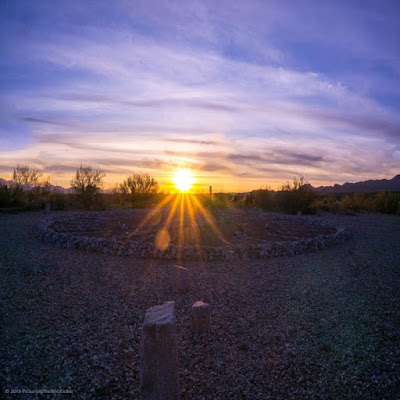When I was there in the spring, Jim, the person who constructed the sunwheel, explained its purpose to me. (There’s also brochure about it that’s available in a box attached to a signpost.) He explained that this sunwheel is modeled after Native American medicine wheels. They were, Jim said, astronomic tools used to highlight the passage of the seasons. They are sacred structures and are found in many Native cultures, according to Jim.
 |
| Sunwheel at sunset |
Nevertheless, it’s a very impressive site. What makes it even more remarkable is that it is built on top of a missile silo. The center cairn was the opening through which a Titan II missile would have been launched if the United States had been under nuclear attack.
Southern Arizona was home to 18 Titan II missiles during the Cold War. These intercontinental ballistic missiles, housed in underground silos around Tucson, were part of a network of 54 nuclear-armed warheads that were in operation from 1962 – 1987. Site #18 was the missile in Catalina; it's the one just above the text that says "Mt. Lemmon."
 |
| Location of Titan II missiles in Tucson; click here for an interactive map |
Fortunately, none of the Titan II missiles were ever launched and now the site in Catalina has been transformed into a place of peace.

























